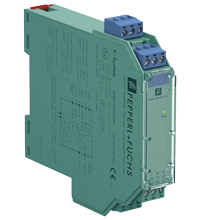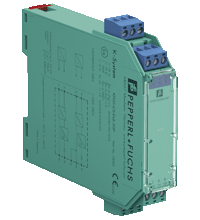Get in touch
enquiry@pcpelectric.sg
0
Repeater
In process automation, a repeater is a device used to extend the range of communication signals, ensuring that data can be transmitted over longer distances without degradation or loss of signal integrity. Here’s an overview of how repeaters function and their role in process automation:
Functionality
- Signal Boosting: Repeaters amplify or regenerate signals to extend their reach. They receive a weak or degraded signal, amplify or reconstruct it, and then retransmit it at a higher power level.
- Error Reduction: By regenerating the signal, repeaters help to reduce errors that can occur due to noise or attenuation over long distances.
- Protocol Compatibility: They often support various communication protocols, ensuring compatibility across different segments of the network.
Benefits
- Extended Communication Range: Repeaters enable communication over long distances, which is particularly important in large industrial plants or remote locations.
- Improved Signal Quality: By boosting or regenerating the signal, repeaters ensure that data is transmitted with minimal loss and distortion.
- Network Reliability: They enhance the reliability and stability of communication networks, reducing the risk of signal dropouts and communication failures.
Applications
- Industrial Networks: Used in industrial Ethernet, Modbus, Profibus, and other fieldbus networks to extend the range of data communication between devices and control systems.
- Remote Monitoring: Essential for transmitting data from remote sensors or devices back to central control rooms or data centers.
- Wireless Communication: In wireless networks, repeaters are used to extend the coverage area of Wi-Fi, radio, or other wireless communication systems.
Types of Repeaters
- Wired Repeaters: Used in wired communication systems such as Ethernet or fieldbus networks to boost signals over long cable runs.
- Wireless Repeaters: Used in wireless networks to extend the range of Wi-Fi, radio, or cellular signals.
- Fiber Optic Repeaters: Used in fiber optic networks to regenerate optical signals, allowing for longer distances without loss of signal quality.
Considerations
- Signal Type and Protocol: Ensure the repeater is compatible with the specific signal type and communication protocol used in your network.
- Distance and Coverage: Choose a repeater that can cover the required distance and provide adequate signal strength and quality.
- Power Supply and Environment: Consider the power requirements and environmental conditions (e.g., temperature, humidity) where the repeater will be installed.
Examples of Use
- Industrial Ethernet Networks: Repeaters are used to extend Ethernet communication between PLCs, sensors, and control systems in a large manufacturing plant.
- Fieldbus Systems: In Profibus or Modbus networks, repeaters help maintain reliable communication over long distances between field devices and controllers.
- Remote Monitoring Stations: For remote monitoring of pipelines, tanks, or other infrastructure, repeaters enable data transmission from remote sensors to central monitoring stations.
Repeaters play a crucial role in ensuring robust and reliable communication in process automation, particularly in large-scale or distributed industrial environments.
Display prices in:
SGD



